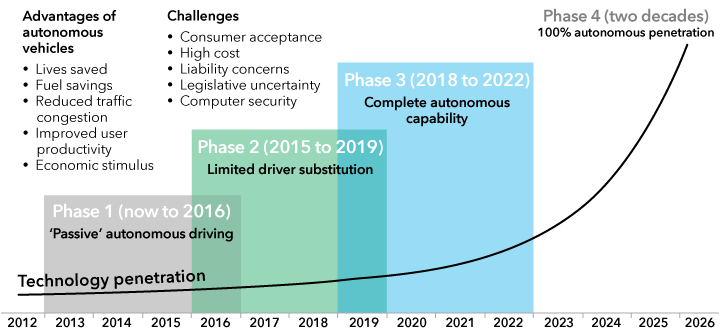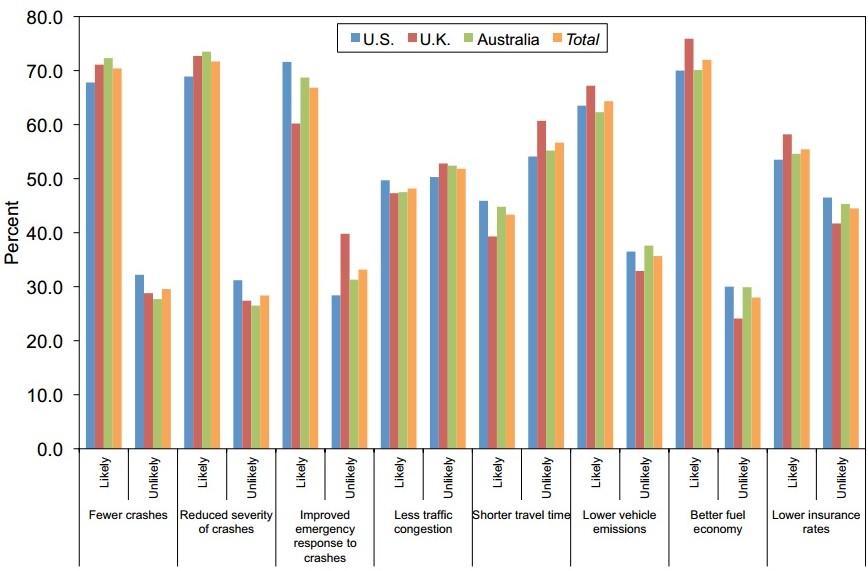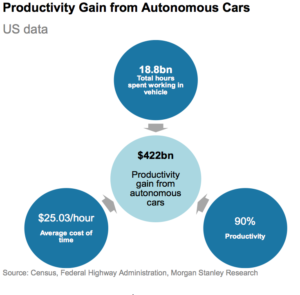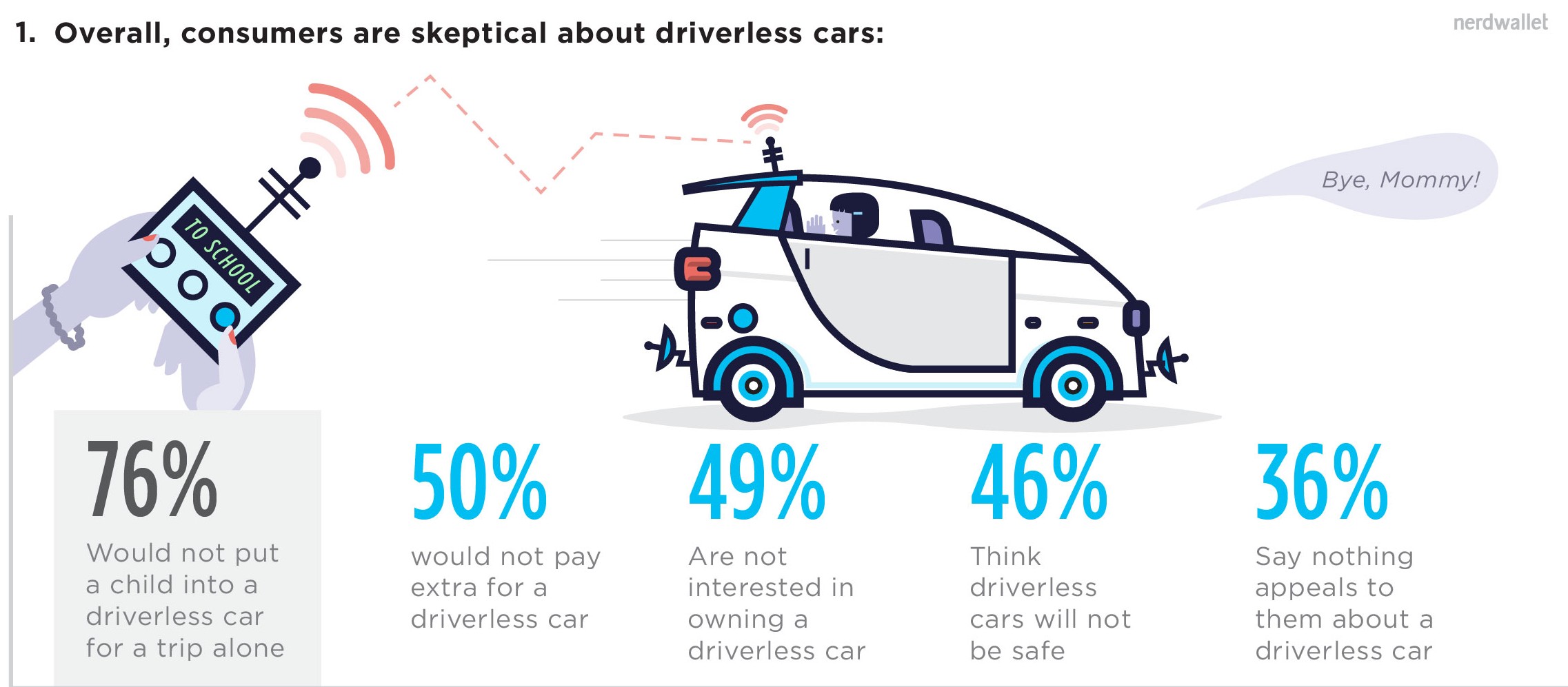The whole of civilization and evolution of humankind can be summed up as simply getting from one place to another. An average American male spends 699 hours per year of their life driving. That is a total of 48,390 hours, if we consider 70 years as an average life, being on the road, stuck in traffic jams and generally being non-productive. Companies like Google and Tesla are keen to come up with a solution to this problem. Autonomous cars will not only save time but also save lives as nearly 1.37 million people fall victim to road accidents every year. However, as it often is with new technology, people are skeptical more so because their lives are literally at the hands of a computer. Despite, companies are betting on the future of self-driving cars and electric cars.
Traditional car manufacturers in the last few years have focussed heavily on safety and making cars more intelligent, so that the passengers inside are comparatively safer. New age cars are fitted with traction control, automated braking systems, and some of the newer Tesla models can even handle themselves without any human intervention on highways and easily navigable places. The near future promises to bring us fully autonomous cars courtesy efforts from companies like Google and Uber. But, the future for autonomous cars is not as simple as companies like Google are presenting automated cars, not as a personal vehicle, but as a node in the grid of an intelligent and connected transportation system. Where does this place the traditional car manufacturers? And are we even ready for such a sea change? With questions like these, abuzz in our minds, we delve deeper into the new and exciting world of automated cars!
Self Driven And Electric Car Industry Witnessing A Revolutionary Development
As the infographic above states, we are in the stage of passive autonomous driving. Heading into 2016, the industry has no clear leader. Google has been working on their cars from 2012 and rumours suggest that they’re ready to branch off the Google Cars Team from the experimental Google X Labs to a full blown company under the Alphabet umbrella. Back in September, Google hired John Krafcik, an auto-industry veteran, as the CEO of the cars project and till now the autonomous cars have logged nearly a million miles (1.6 million km) on open public roads.
Reports suggest that next year we will see Google release these cars in and around Austin, Texas and San Francisco in controlled environments like college campuses, military bases or corporate office parks. Google is looking to position itself as a viable alternative to Uber and Lyft by offering consumers the experience of driverless cars without the hassles of owning one.
Not to be undone, Uber, the startup that is now evaluated at close to $50 billion, is spending some of its investor money in coming up with a viable competitor to Google Cars. While the future of companies like Uber and Lyft hangs in the balance, the traditional automobile manufacturers are stepping up their game as well! Companies like Ford and GM motors are aggressively testing out their own version of automated driving as well. Some like Tesla has already beaten Google to the punch, although their automated cars still require humans to be at the helm should any sort of tricky situation arises. Morgan Stanley analyst, Adam Jonas predicts that Tesla can triple their revenue by 2029 if they follow Google’s footsteps and venture into the on-demand mobility market.
The One Man Wonder: Challenging Google and Tesla
While all the big companies have spent millions of dollars to get their cars on a road, one man by the name of George Hotz has built a car that can drive itself in his own backyard. The genius hacker has managed to turn his run of the mill Honda Acura into an autonomous vehicle. What’s even more impressive, is that Hotz plans to make these kits available for car manufacturers and even car owners at only $1000/unit.
Most of the current automakers that have implemented autonomous driving to an extent have used the Mobileye technology. Mobile eye has seen dramatic increases in their revenue with their last quarter racking up $71 million, a 104% increase YoY. However, Hotz believes they’re technologically inferior as he says
“They’re a company that’s behind the times, and they have not caught up.”
Hotz and his off the shelf solution may be the new entrant that will kick-start the growth of consumer grade autonomous cars. Being dependent on machine learning and end-to-end deep network algorithms, this implementation of autonomous learning can learn how a real human drive and is better at handling situations than a piece of software that is hard-coded for certain circumstances.
Are We Ready For Robot Drivers?
Overall, if we have a look at the data, in the three developed countries, there seems to be a universally positive opinion towards driverless cars. There is still a vast number of skeptics who think that letting a computer make such split-second life and death decisions is letting the AI run a little too far. However, with that being said, what most drivers are worried about is the laws and legislatures as nearly 50% across all 3 markets consider that they will still have to pay when their Automated vehicle is involved in a crash!
Some companies are thus taking matters into their own hands and companies like Volvo with their liability promise is reassuring consumers and easing their way into this new market. While the pros of such a society would be manifold, we can divide them into a few main categories.
Gain in Productivity
Harping back to the point we made at the beginning of this article, driving is a time-consuming chore, one we could do very well without! If we look at the data for the US alone, we see that the gains in productivity for a year can be to the tune of $422 billion.
Reduction in Costs
One of the major hassles of owning a car comes from the fact that whenever something unforeseen happens to it, the owner has to shell out a ton of money. In the future, however, Google and Uber will see for us, no one owns a vehicle. This reduces traffic jams and precious biofuel. Also, having the car back to a central hub at the end of the day could mean that companies could perform daily checks for software updates and safety measures which can never be done with personal vehicles. The reduction in the cost of travel/miles comes down from $0.75 to $0.15 a whopping 80% decrease.
Better for the Environment and Quality of Life
Paraphrasing Enrique Penalosa, former Mayor of Bogotá, Colombia
A developed country is not a place where the poor have cars. It’s where the rich use public transport
With automated cars running the roads and private ownerships of cars being reduced to a minority, we can expect drastically lower fuel consumptions. With lesser number of trips required, traffic jams will be a thing of the past as, and the rate of accidents will decrease as well.
Many Still Remain Skeptic
As this infographic above clearly demonstrates, our society as a whole is still not ready for human fewer cars. With more than 76% saying they would never trust a robot to take care of their children. In fact, we see some of the earliest legislature and legal hurdles that these cars and their companies will have to face are already coming up. Driverless cars have been all but banned by the California DMV, and severe limitations are placed on cars with some degree of automation as to where and how they can use their autonomous capabilities. We can only hope that with positive campaigns from companies like Google and Tesla a change in public opinion comes around!
Final Thoughts
With a huge number of potential industries benefitting from the move to autonomous cars, one can say that driverless cars are all but an eventuality. As the cost of living and fuel prices increase around the world, the expenses of owning a car and the insurance and related hassles will outweigh the convenience. The success of companies like Uber and Lyft have proven that there is a growing shift in the mindset of daily commuters and with the advent of robotised cars, this trend will continue to grow in momentum.
With help from the Government regarding laws and legislatures as promised by US Secretary of Transportation, the dream of driverless cars all over the world by 2025 seems to be getting more and more in touch with reality. This is certainly an exciting space to look forward to as the duel between consumer electronic companies like Google and traditional car manufacturers for the top spot in autonomous cars heats up in the near future!









